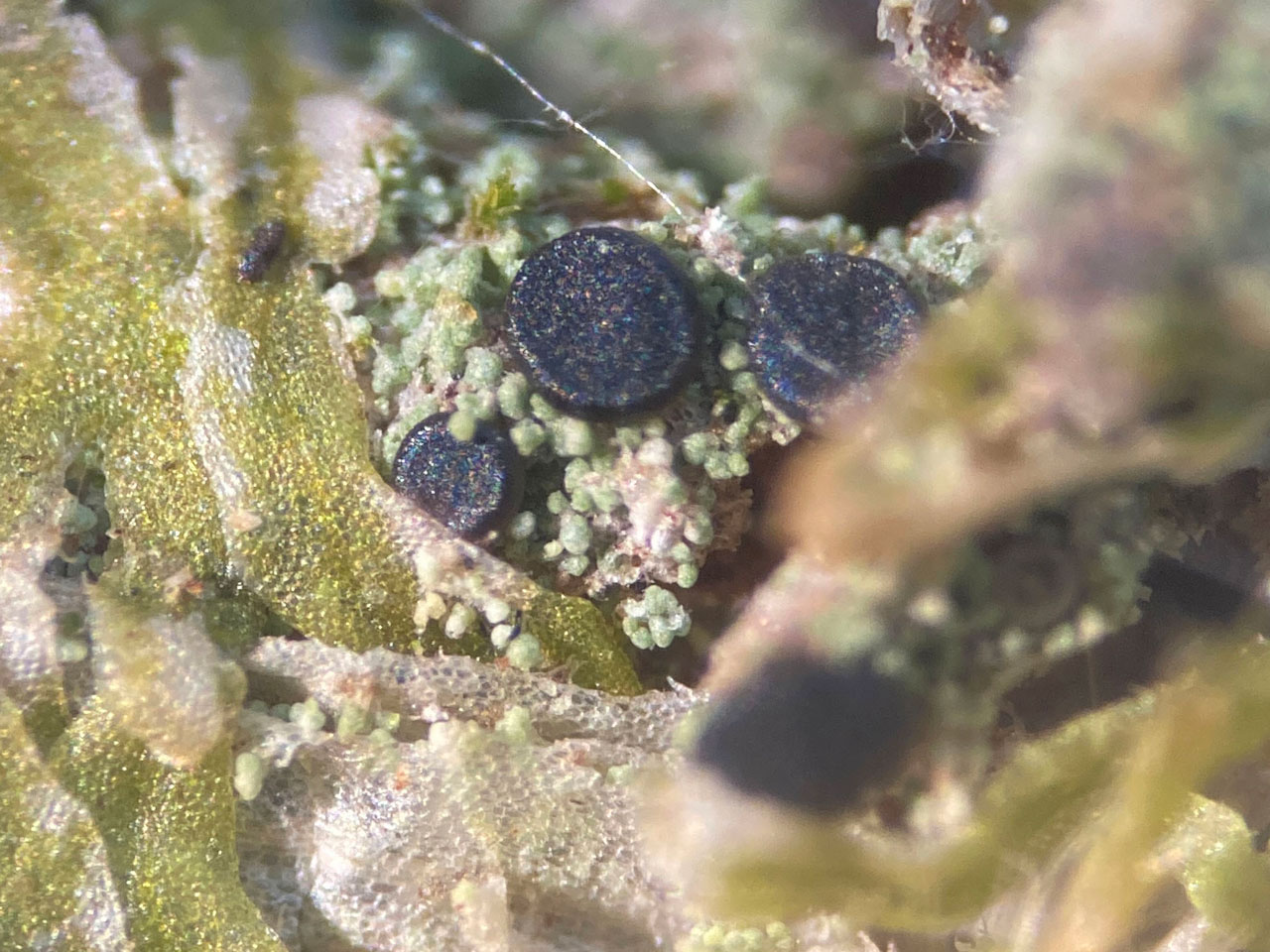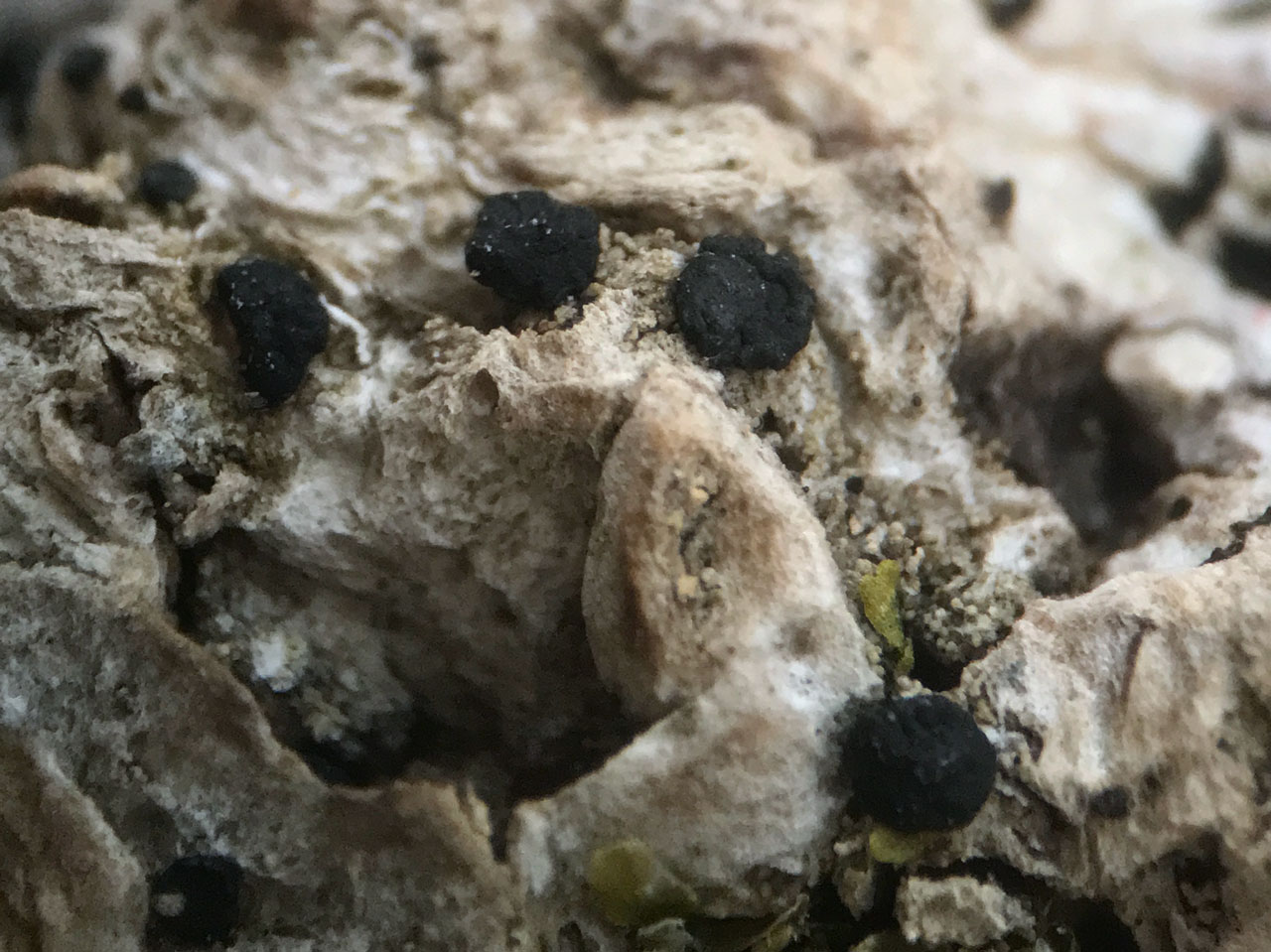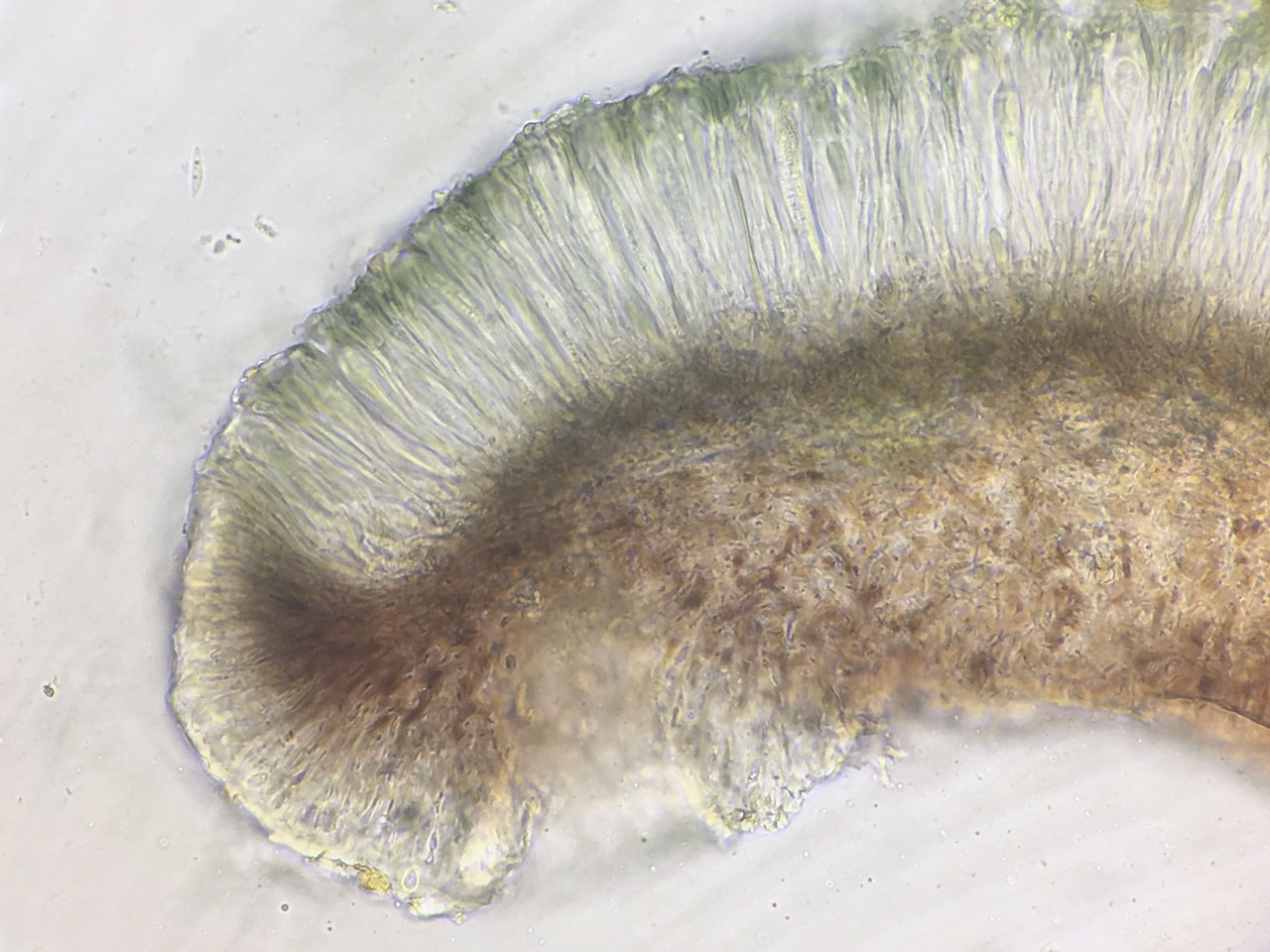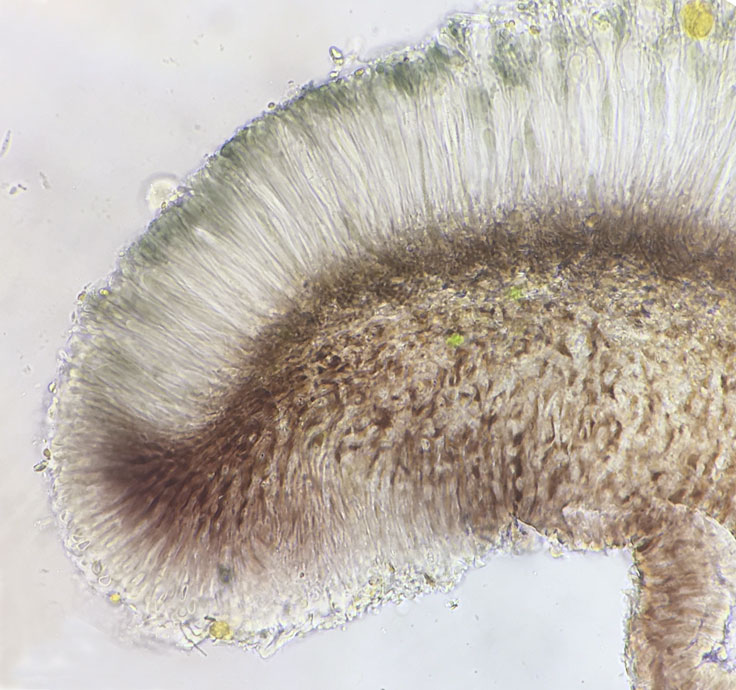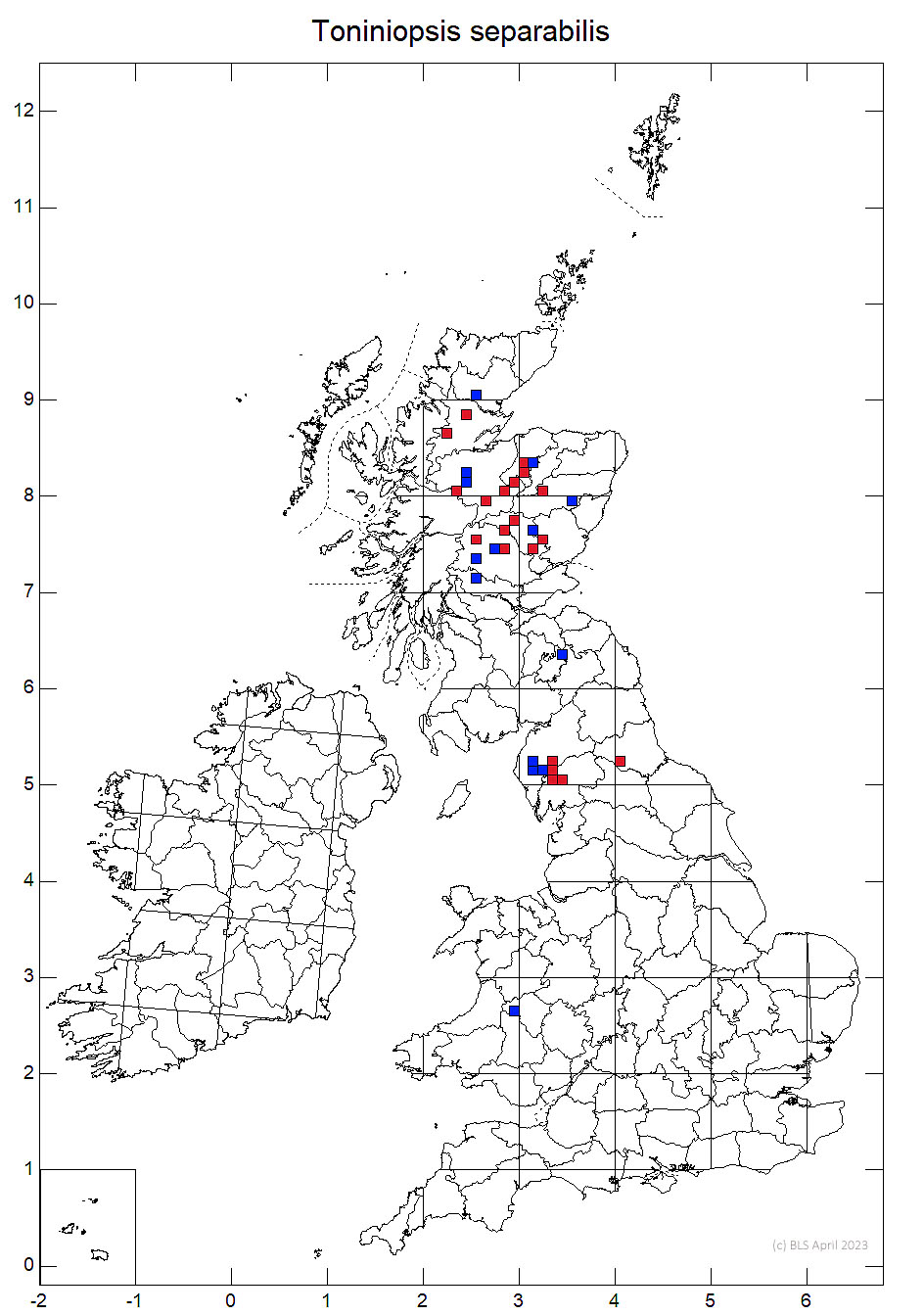Toniniopsis separabilis
Draft
Thallus of green (when fresh) scattered to confluent granules, not forming a thick granular crust, the granules 40–100 μm diam.; photobiont cells 7–14 μm diam. Apothecia 0.3–0.6 (–0.9) mm diam., flat, later convex, sometimes tuberculate and to 1.2 mm diam., black or rarely pale (albino morph); true exciple weakly developed, dark red-brown within, the outer edge ± colourless; epithecium pale to dark green, K–, N+ purple-violet; hymenium 50–65 μm high, colourless; hypothecium dark red-brown, K± purple in upper part, pale red-brown below; paraphyses 1–1.5 μm diam., unbranched or rarely forked above; apices only slightly wider, to 3 μm diam. Ascospores 20–36 (–40) × 2.3– 3.5 (–4) μm, 3- to 7-septate, ± cylindrical. Pycnidia inconspicuous, blackish; conidia 10–20 × ca 0.8 μm, filiform, curved. BLS 0168.
This species was treated as Bacidia subincompta by Coppins & Aptroot (2009) and Toniniopsis subincompta by Kistenich et al. (2018), but Gerasimova et al. (2021) demonstrated that the type of that species belongs to Bellicidia incompta. British material studied to date belongs to T. separabilis, but the look-alike species T. dissimilis Gerasimova et al (2021) could also occur in our region (characterised by having a pre-dominantly wrinkled, warted to subsquamulose thallus and apothecia generally grey-brown to dark brown, often with a lighter margin).
Characterised by the thinly granular thallus, black apothecia, green epithecium and red-brown upper hypothecium (except the rare albino morph), and cylindrical ascospores. Bellicidia incompta has a granular- verrucose thallus, a colourless or pale red epithecium, shorter ascospores, a completely dark red-brown hypothecium and cylindric-ellipsoidal conidia.
See also Fungi of Greta Britain and Ireland
On trunks of veteran trees (Ash, Oak, Aspen, Downy Birch and Wych Elm) in wound tracks, in ancient woodlands.

Rare, N. England (Cumbria, Durham), C. Wales, S.E. Scotland (Selkirkshire), N. Scotland (C. & E. Highlands).
A nationally Vulnerable species with a sub-oceanic distribution with the main population centred in the east of Scotland. Occupies wound tracks a wide range of trees, including Birch in boreal woods, but locally vulnerable to tree diseases such as Dutch Elm Disease and Ash Dieback; the Lake District population has mainly been recorded from Ash and is particularly vulnerable to Ash Dieback. At its only Welsh site it was thought lost when the Wych Elm it was growing on died in 1983, but was then rediscovered on an Oak a few 100m away in 2022. All populations depend on a continuity of veteran trees in at least reasonably well lit situations.
Britain: Vulnerable
Scotland: Priority Taxon for Biodiversity in Scotland
Wales: Regionally Extinct (2010), rediscovered 2022
England: Section 41 species
Coppins, B.J. & Aptroot, A. (2009). Bacidia. In Lichens of Great Britain and Ireland (Smith, C.W., Aptroot, A., Coppins, B.J., Fletcher, A., Gilbert, O.L., James, P.W. & Wolselsey, P.A. eds): 189-207. London: British Lichen Society.
Cannon, P., Ekman, S., Kistenich, S., LaGreca, S., Printzen, C., Timdal, E., Aptroot, A., Coppins, B., Fletcher, A., Sanderson, N. & Simkin, J. (2021). Lecanorales: Ramalinaceae, including the genera Bacidia, Bacidina, Bellicidia, Biatora, Bibbya, Bilimbia, Cliostomum, Kiliasia, Lecania, Megalaria, Mycobilimbia, Phyllopsora, Ramalina, Scutula, Thalloidima, Toninia, Toniniopsis and Tylothallia. Revisions of British and Irish Lichens 11: 1-82.
Gerasimova, J.V., Urbanavichene, I.N., Urbanavichus, G.P. & Beck, A. (2021). Morphological and phylogenetic analyses of Toniniopsis subincompta s. lat. (Ramalinaceae, Lecanorales) in Eurasia. Lichenologist 53: 171-183.
Kistenich, S., Timdal, E., Bendiksby, M. & Ekman, S. (2018). Molecular systematics and character evolution in the lichen family Ramalinaceae (Ascomycota: Lecanorales). Taxon 67: 871-904.
Text by Neil A. Sanderson based on Cannon et al (2021)
